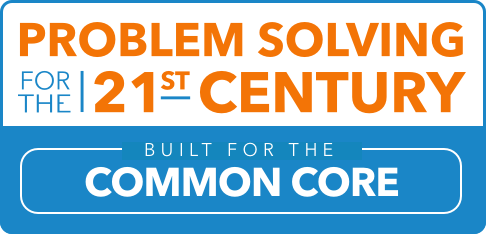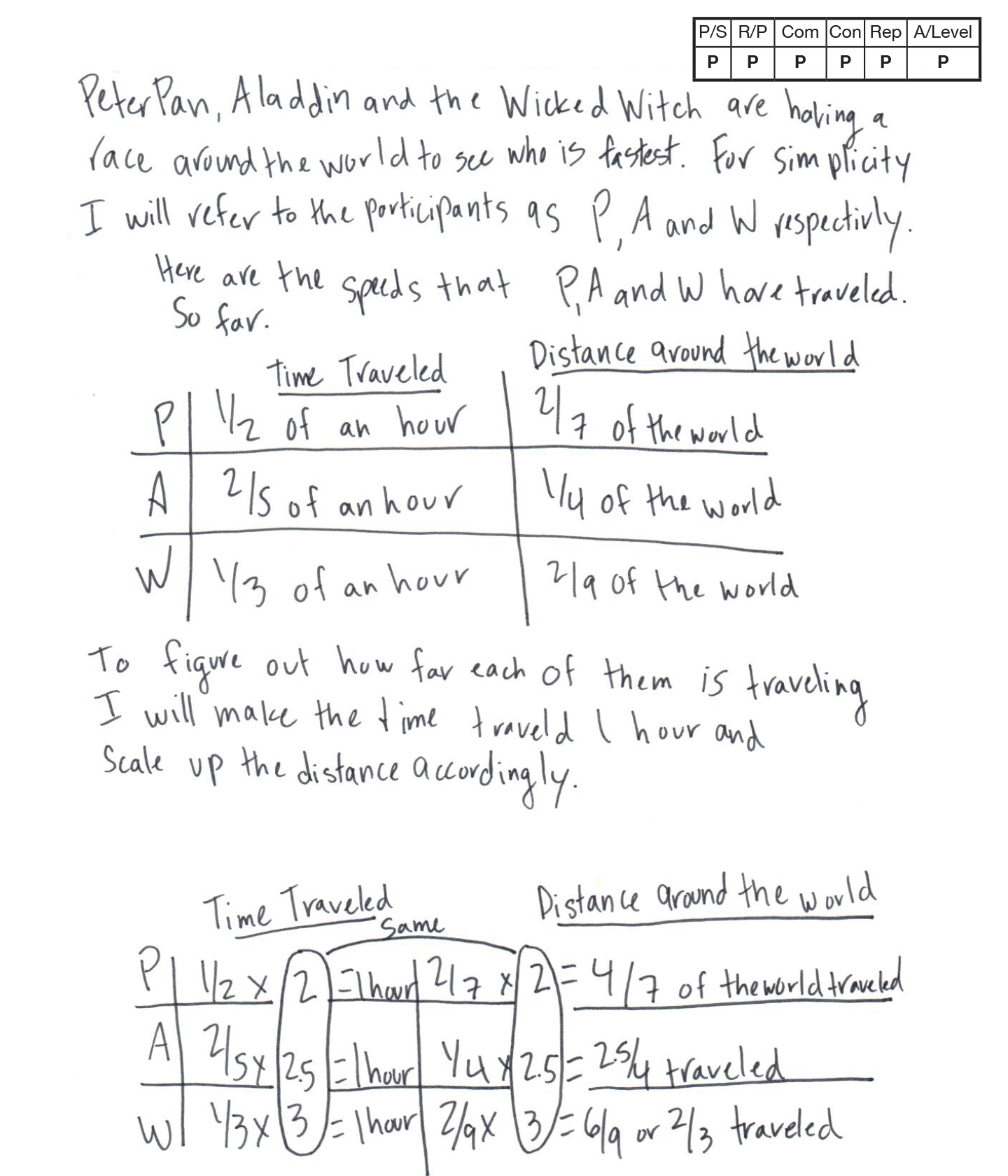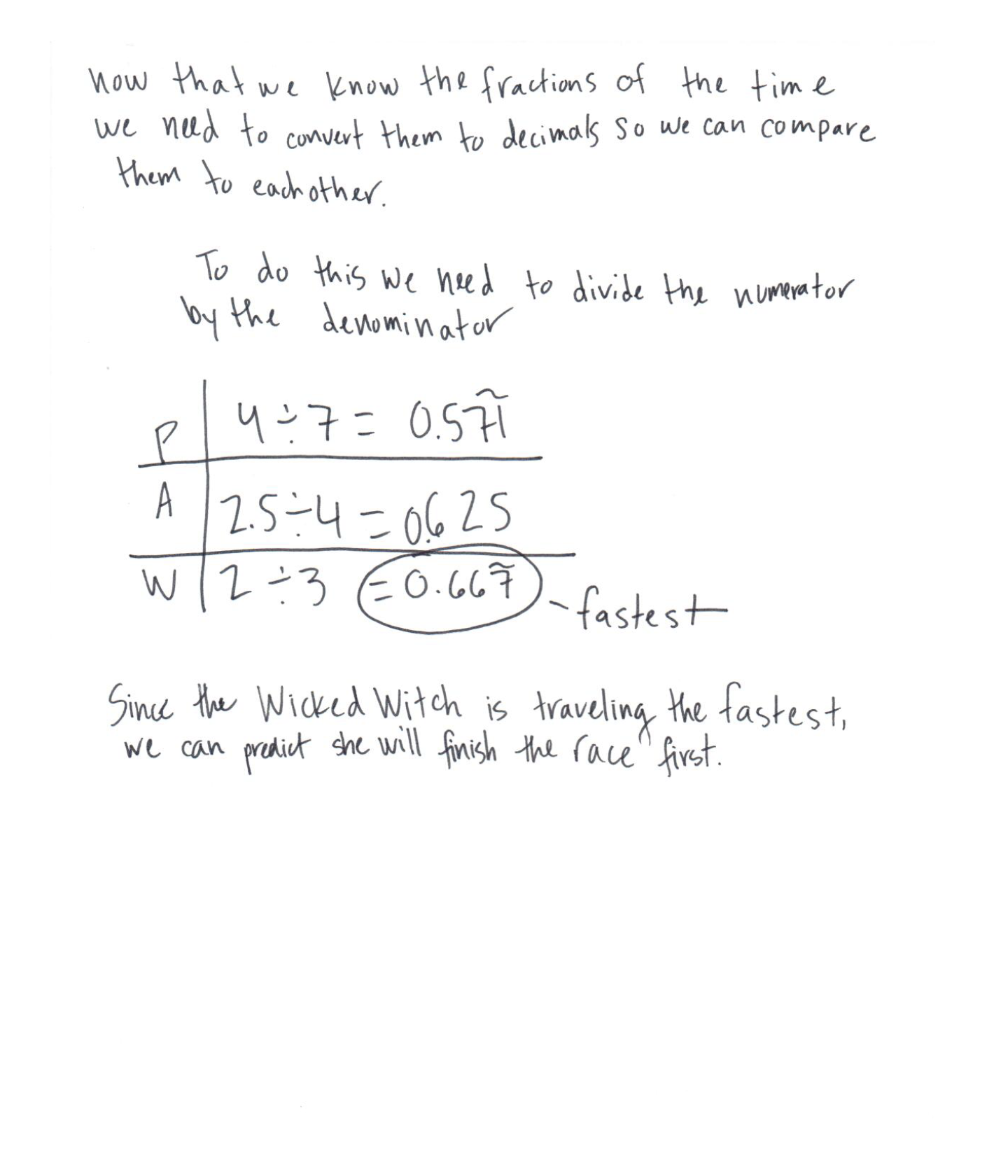Going Airborne
Problem Solving
practitioner
Problem Solving Rationale
<p>The student’s strategy of scaling up the distance traveled by the same scale factor required to bring the cartoon’s race time to one-hour works to solve the problem. The student correctly finds that Peter Pan completes `sf text (4)/sf text (7)` of the total distance around the world in one hour, Aladdin completes `sf text (2.5)/sf text (4)` of the total distance, and the Wicked Witch completes `sf text (6)/sf text (9)` of the distance. The student converts these values to decimals for comparison and correctly determines that the Wicked Witch is traveling the fastest.</p>
Reasoning and Proof
practitioner
Reasoning Proof Rationale
<p>The student demonstrates correct understanding of unit rates associated with ratios of fractions. The student determines the unit rate of distance traveled per one hour by finding a scale factor which calculates each character’s distance traveled after one hour to compare the distance traveled by the characters. The student then converts fractional amounts to decimal equivalents for this comparison. The calculations are accurate and support the solution given.</p>
Communication Level
practitioner
Communication Rationale
<p>The student uses an organized, sequenced, and label response to communicate his/her work. The student identifies the problem to be solved, "<i>having a race around the world to see who is fastest</i>,” explains the steps to his/her solution process and explicitly states the solution. Formal math language (i.e., scale up, convert, denominator, numerator, compare, decimals, fastest) and symbolic notation are used to consolidate math thinking and to communicate ideas. The work is clear and easy to follow.</p>
Connections Level
practitioner
Connections RationaleGoing Airborne
<p>The student converts fractional amounts for distances traveled in an hour by each character to decimals for easier comparison.</p>
Representation
practitioner
Representation Rationale
<p>The student uses several tables, including a ratio table to organize the data and his/her computations in each step of the solution process. The values and labels given are accurate.</p>



